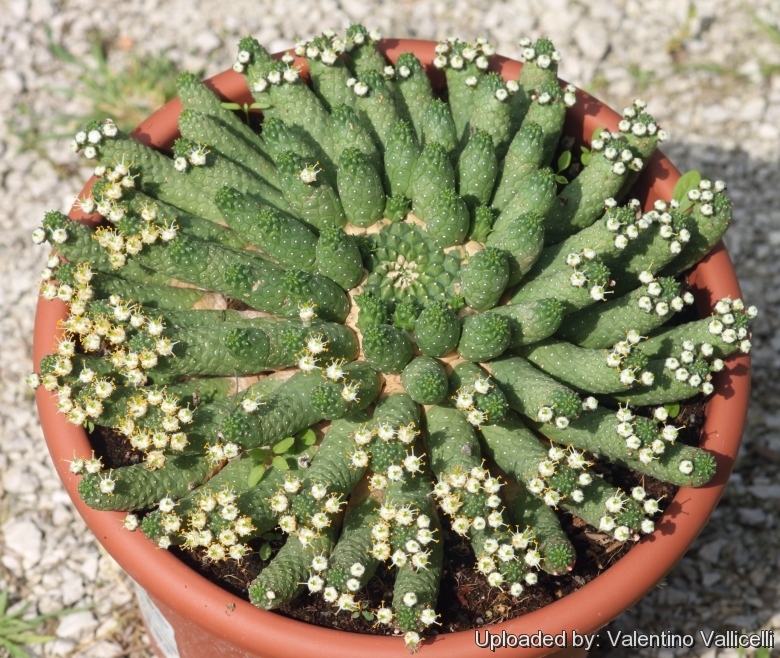
Euphorbia inermis Photo by: Valentino Vallicelli
Origin and Habitat: Eastern Cape, Republic of South Africa.
Synonyms:
See all synonyms of Euphorbia inermis
back
Accepted name in llifle Database:Euphorbia inermis Mill.Gard. Dict., ed. 8. 13 1768Synonymy: 2
Accepted name in llifle Database:Euphorbia inermis var. huttonae (N.E.Br.) A.C.White, R.A.Dyer & B.SloaneSucc. Euphorb. 395 1941Synonymy: 3
back
Common Names include:
ENGLISH: Medusa's Head, Green Crown
Description: Euphorbia inermisSN|23413]]SN|25160]] is a many-branched medusaeform euphorbia up to about 50 cm in diameter with branches radiating like fingers from a central stem, continued below ground as a large fleshy tuber. Euphorbia inermisSN|25160]]SN|25160]] is monoecious. A properly grown plant is a joy, especially when it is in flower, for then each short, erect finger is covered with fragrant, pure white (or yellow) flowers that look like snow crystals and the cluster is exquisite. This is one of the caudex-forming Euphorbias, very similar to Euphorbia esculenta and Euphorbia caput-medusaeSN|25160]]SN|23413]]. If you look down into a large specimen you'll see what looks like a sun flower; it's another example of a Fibonacci spiral. The whole plant produce a caustic milky sap.
Root: Tuberous.
Body (main stem or caudex): Short and thick up to 10 cm in diameter, producing a crown of three or more series of crowded branches lying over each other like tiles around the central flattened or depressed tuberculate obconic area at the top, mostly below ground and not rising much above ground level.
Branches: Club-like to cylindric, serpent-like, tessellately tuberculate, glabrous, greyish-green, blue-green or dull green 4-25 cm long, but in cultivation the branches often elongate a lot and become snake-like, 10-12 mm thick, ascending or ascending-spreading. Tubercles rhomboid, 2 5-10 mm long, 3-6 mm broad and 1-2 mm prominent, shortly and obtusely conical, with a small white leaf-scar.
Leaves: Minute, rudimentary, soon deciduous, 1 mm long and broad, ovate, acute
Inflorescences: Cyathia solitary in the axils of the tubercles at the tips of the branches. Peduncles stout 3-4 mm long, bearing about 4 bracts and 1 involucre, glabrous, sometimes persistent. Bracts 1-2 mm long, scale-like, ovate or oblong, entire or ciliate; involucre 8-9 mm in diameter, cup-shaped, white, with 5 (rarely 4) nectar glands and 5 transversely rectangular ciliate lobes, glabrous on the cup outside and within, but pubescent on the back of the lobes and filled with woolly-white bracteoles; glands glabrous, 1-3 mm long, 2-3 mm broad across the tips variable in shapeon the same plant, green with white, bifid. toothed, or with much divided pro-cesses, sometimes entirely white; ovary sessile, woolly-white at the apex, thinly sprinkled with ascending or spreading hairs or rarely glabrous; styles united to the apex into a slender column 3-4 mm long; stigmas about 1 mm long, more or less deeply bifid, with cuneate lobes, radiating and contiguous forming a sort of disc.
Blooming season: Flowers appear in spring and summer.
Fruit: Capsule sessile, trigonous-subglobose, 3-5 mm in diameter, glabrous or with a few hairs.
Seeds: 3 mm long, ellipsoid, slightly 4-angled, minutely tuberculate on the dorsal sides smooth on the ventral, dark brown
Subspecies, varieties, forms and cultivars of plants belonging to the Euphorbia inermis group
 Euphorbia inermis Mill.: has green with white (ore pure white) nectar glands variably bifid or with much divided processes on the outer margin. Distribution: Eastern Cape, South Africa.
Euphorbia inermis Mill.: has green with white (ore pure white) nectar glands variably bifid or with much divided processes on the outer margin. Distribution: Eastern Cape, South Africa.- Euphorbia inermis var. huttonae (N.E.Br.) A.C.White, R.A.Dyer & B.Sloane: has yellow-green nectar glands, truncate and toothed or subentire. Fruit glabrous. Distribution: Albany, near Carlisle Bridge, Eastern Cape, South Africa.
Bibliography: Major references and further lectures
1) N. E. Brown, J. Hutchinson and D. Prain “Flora Capensis” Vol 5 Part 2, page 216 (1925)
2) Alain Campbell White, Robert Allen Dyer, Boyd L. Sloane “The succelent Euphorbisae (southern Africa)” Abbey garden press, 1941
3) Urs Eggli “Illustrated Handbook of Succulent Plants: Dicotyledons” Volume 2. Springer, 2002
4) Goldblatt, P. & Manning, J. “Cape Plants. A Conspectus of the Cape Flora of South Africa.” National Botanical Institute, Cape Town & Missouri Botanical Garden, St Louis. (2000)
5) Manning, J. & Goldblatt, P. “West Coast: South African Wildflower Guide” 7. Botanical Society of South Africa with the Darling Wildflower Society, Cape Town.1996.
6) Philip Miller “The Gardeners Dictionary: Containing the Best and Newest Methods of Cultivating and Improving the Kitchen, Fruit, Flower Garden, and Nursery” A - L, Volume 1 1759
7) Noel Urton “Plants of the Swartkops valley bushveld” Zwartkops Trust, 1993
8) The Bulletin of the African Succulent Plant Society Vol. 1-2 African Succulent Plant Society 1966
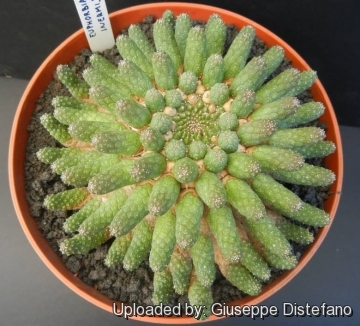 Euphorbia inermis Photo by: Giuseppe Distefano
Euphorbia inermis Photo by: Giuseppe Distefano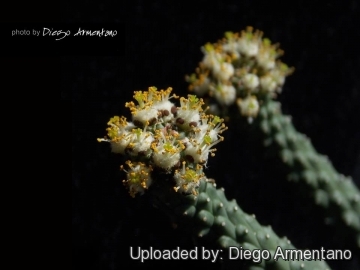 Euphorbia inermis Photo by: Diego Armentano
Euphorbia inermis Photo by: Diego Armentano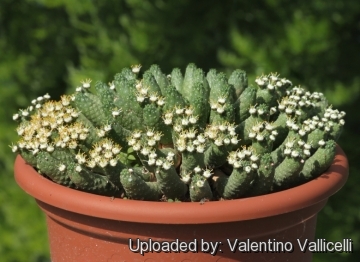 Euphorbia inermis Photo by: Valentino Vallicelli
Euphorbia inermis Photo by: Valentino Vallicelli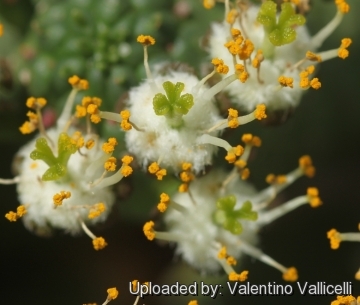 Euphorbia inermis Photo by: Valentino Vallicelli
Euphorbia inermis Photo by: Valentino Vallicelli Euphorbia inermis Photo by: Giuseppe Distefano
Euphorbia inermis Photo by: Giuseppe Distefano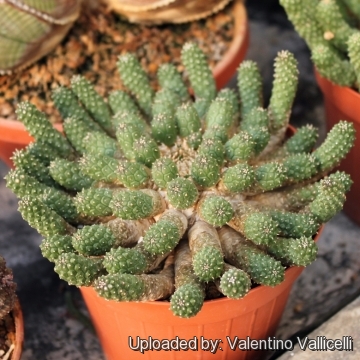 Euphorbia inermis Photo by: Valentino Vallicelli
Euphorbia inermis Photo by: Valentino Vallicelli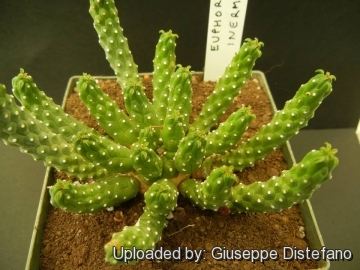 Euphorbia inermis Photo by: Giuseppe Distefano
Euphorbia inermis Photo by: Giuseppe Distefano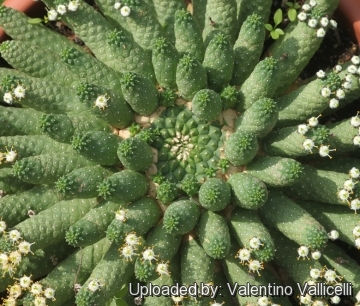 Euphorbia inermis Photo by: Valentino Vallicelli
Euphorbia inermis Photo by: Valentino VallicelliCultivation and Propagation: Euphorbia inermisSN|25160]]SN|25160]] is an easy species to grow that is suited for any well drained soil in full sun. It is cultivated as an ornamental, and is a particular favourite of succulent plant enthusiasts.
Growing rate: It is a relatively slow growing and long lived plant and once established, it will be content in its position and with its soil for years.
Soil and pots: It likes deep pot with generous drain holes to accommodate its tap root, needs a very airy potting medium very permeable to water which mainly consists of non organic material such us clay, pumice, lava grit, expanded slate and only a little peat or leaf-mould. Re-pot every two years.
Fertilization: Need a perfect fertilizer diet in summer. Use preferably a cacti and succulents fertilizer with high potassium content including all micro nutrients and trace elements or slow release fertilizer.
Exposure: It can tolerate moderate shade, and a plant that has been growing in shade should be slowly hardened off before placing it in full sun as the plant will be severely scorched if moved too suddenly from shade into sun.
Watering: Water regularly during the active growing season. No water should ever be allowed to stand around the roots. Keep almost completely dry in winter. However this spurge will tolerate dryness and can even thrives in poor, dry soils, but do better when grown in nutrient-rich soils with regular watering.
Aerosol salt tolerance: It is salt tolerant.
Hardiness: Some cold tolerance. This spurge has tolerated temperatures down to –6ºC and even a little snow. However it can be difficult to get it to look its best without a good amount of heat and sun (USDA Zones 8-11)
Rot: Rot it is only a minor problem with Euphorbias if the plants are watered and “aired” correctly. If they are not, fungicides won't help all that much.
Known hazards: As with all other Euphorbias when a plant get damaged it exudes a thick white milky sap known as latex. This latex is poisonous, and may irritate skin. Pay extreme attention not to get any in your eyes or mouth. Cultivated plants must be handled carefully.
Propagation: The plant can be reproduced by seeds or cuttings If you take a cutting from this plant, you will get a strange bunch of sideways 'fingers' that will not come true to the shape of the parent. In this case, wait for seed. If you remove an offset, remember to let it dry for some days, letting the wound heal (cuttings planted too soon easily rot before they can grow roots). Lay it on the soil and insert the stem end partially into the substrate. Try to keep the cutting somewhat upright so that the roots are able to grow downward. It is better to wash the cut to remove the latex.
Your Photos
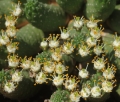
by Valentino Vallicelli

by Giuseppe Distefano




















